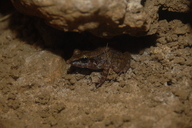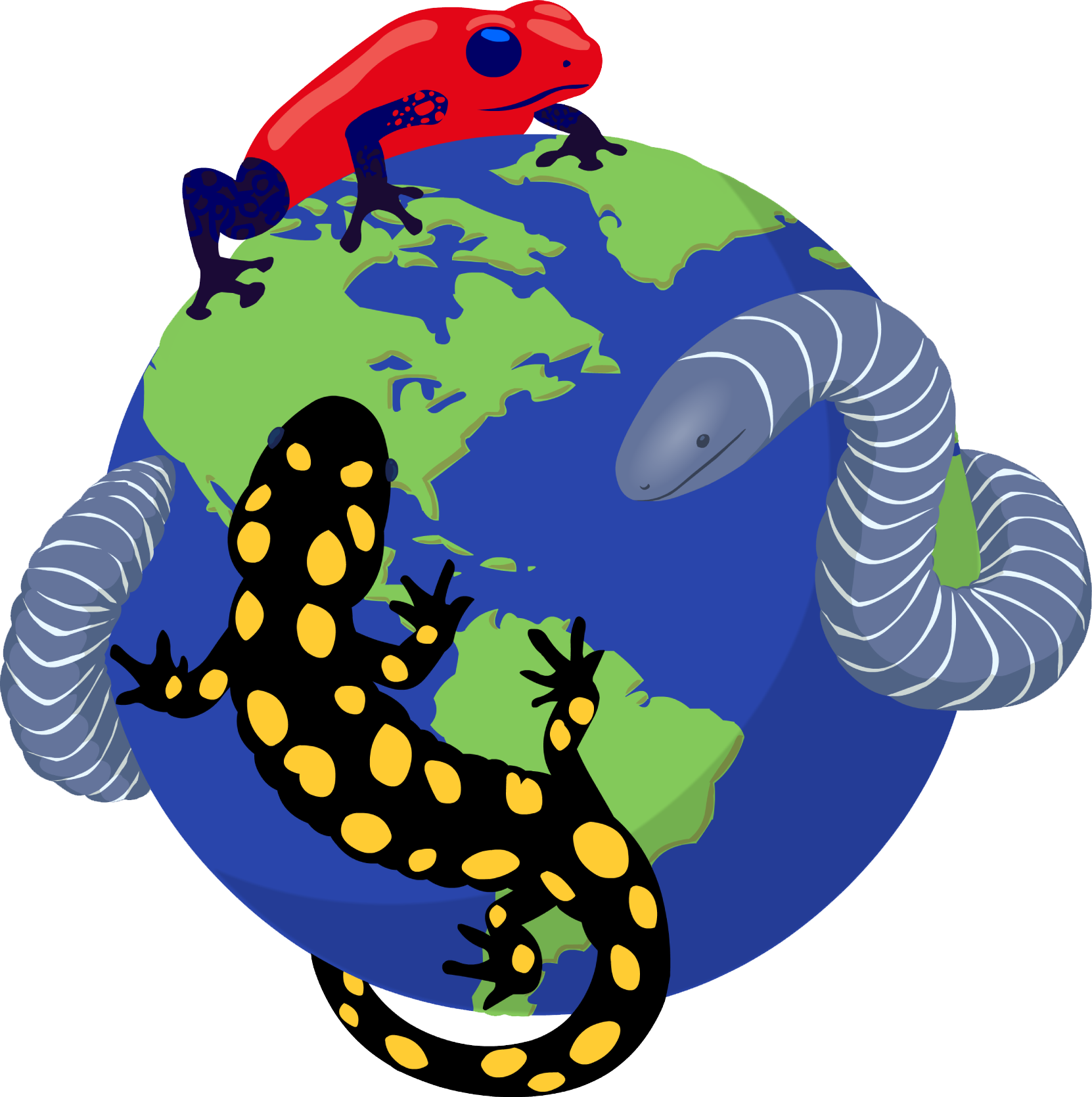|
Description
Snout-vent length is about 38 to 42 mm. The head is relatively narrow; snout round-pointed; upper jaw protruding. Fingers are relatively long and narrow without webs. The first finger is shorter than the second. The dorsum and upper lateral surfaces are grayish olive green to live-brown, the lighter shaded specimens heavily mottled with large irregular, brownish or dark blotches. The upper lips and loreal regions have irregular dark blotches or bands. Hind limbs have narrow, irregular, dark crossbands. Distribution and Habitat
Country distribution from AmphibiaWeb's database: Philippines
It is only known from the island of Gigante South in the Philippines. Gigante South is a small volcanic island of about 300 hectares with limestone caves. This frog occupies primary and secondary forest on karst limestone outcrops at low elevations.Life History, Abundance, Activity, and Special Behaviors
Very little is known about this species. It breeds by direct development. Trends and Threats
Population trends are believed to be decreasing. Its very restricted home range (less than 10km2) makes this species very vulnerable to various threats. Threats include global warming, agriculture, human encroachment of the forest over the limestone karst and caves, guano mining, and the quarrying of limestone. Despite recent complete removal of the forest on the island of Gigante Island, this frog was still observed in the wild in 2000, however, a comprehensive survey is needed to better evaluate the effect of forest destruction and its current status.
Possible reasons for amphibian decline General habitat alteration and loss
Habitat modification from deforestation, or logging related activities
Intensified agriculture or grazing
Mining
Secondary succession
Habitat fragmentation
Loss of genetic diversity from small population phenomena
Climate change, increased UVB or increased sensitivity to it, etc.
Comments
Research and conservation effort on this species are urgently needed, including surveys on Panay Island and declaring the island of Gigante South as a protected area.
References
Brown, W. C. and Alcala, A. C. (1970). ''A new species of the genus Platymantis (Ranidae) with a list of amphibians known from South Gigante Island, Philippines.'' Occasional Papers of the California Academy of Sciences, 84, 1-8.
Ferner, J. W., Brown, R. M., Sison, R. V., and Kennedy, R. S. (2000). ''The amphibians and reptiles of Panay island, Philippines.'' Asiatic Herpetological Research, 9, 34-70.
Stuart, S., Hoffmann, M., Chanson, J., Cox, N., Berridge, R., Ramani, P., Young, B. (eds) (2008). Threatened Amphibians of the World. Lynx Edicions, IUCN, and Conservation International, Barcelona, Spain; Gland, Switzerland; and Arlington, Virginia, USA.
Originally submitted by: Pierre Fidenci (first posted 2009-07-11)
Species Account Citation: AmphibiaWeb 2009 Platymantis insulatus: Island Forest Frog <https://amphibiaweb.org/species/4898> University of California, Berkeley, CA, USA. Accessed Feb 2, 2025.
Feedback or comments about this page.
Citation: AmphibiaWeb. 2025. <https://amphibiaweb.org> University of California, Berkeley, CA, USA. Accessed 2 Feb 2025.
AmphibiaWeb's policy on data use.
|




 Map of Life
Map of Life